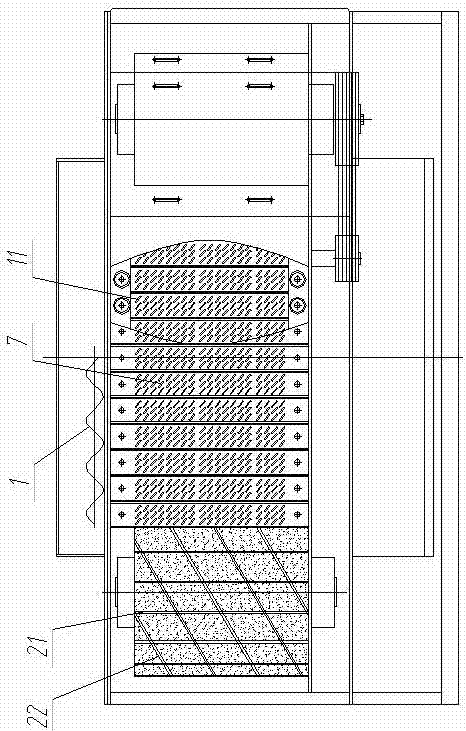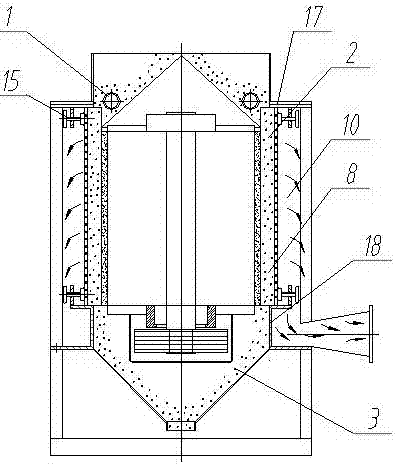Belt type separated flow rice mill and rice milling method
A rice milling machine and flow separation technology, which is used in grain processing, application, grain pod removal, etc., can solve the problems of weakened relative friction, high pressure in the whitening chamber, and large temperature rise of rice grains. The effect of production efficiency and power consumption reduction
- Summary
- Abstract
- Description
- Claims
- Application Information
AI Technical Summary
Problems solved by technology
Method used
Image
Examples
Embodiment 1
[0027] Belt-type split-current rice milling machine, its composition includes: feeding device 1, whitening chamber 2, discharge device 3, transmission device 4 and frame 5, and the described whitening chamber includes 2 groups, that is, two columns facing each other. 1. The rice milling room 8 surrounded by the milling belt 6 and the screening body 7, the milling belt walks around the rollers 9 at the two ends of the frame 5, and connects end to end to form an endless belt. The screening bodies are arranged in two rows on both sides of the straight section of the grinding belt, and there is a gap between the screening body 7 and the grinding belt 6, and the gap is below 2 mm. There is a negative pressure space between the outside of the split body and the shell, and the negative pressure space 10 is connected with a suction fan.
Embodiment 2
[0029] Embodiment 1 In the belt-type separated flow rice mill, the sieving body is arranged along the grinding belt, and the overall layout is oblong, and the sieving body has sieve holes 11, and the sieve holes The width is 0.6-1.8 mm, and the length of the sieve holes is 8-20 mm. As shown in the drawings, the sieve holes are arranged obliquely, and the lower part of the sieve body has a side outlet 12 .
Embodiment 3
[0031] Embodiment 1 or 2 described belt-type separated flow rice milling machine, described grinding belt is the flat belt or chain that has installed milling piece, and described milling piece is bar shape, is fixed on described flat plate On the belt 14 or the chain, the milling sheet is a sand sheet or a metal sheet.
PUM
 Login to View More
Login to View More Abstract
Description
Claims
Application Information
 Login to View More
Login to View More - R&D
- Intellectual Property
- Life Sciences
- Materials
- Tech Scout
- Unparalleled Data Quality
- Higher Quality Content
- 60% Fewer Hallucinations
Browse by: Latest US Patents, China's latest patents, Technical Efficacy Thesaurus, Application Domain, Technology Topic, Popular Technical Reports.
© 2025 PatSnap. All rights reserved.Legal|Privacy policy|Modern Slavery Act Transparency Statement|Sitemap|About US| Contact US: help@patsnap.com



